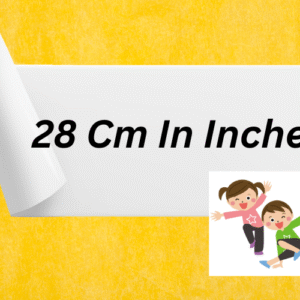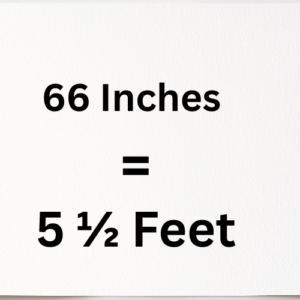Five meters might sound like just a number, but it’s a measurement that pops up in all sorts of places in everyday life. Whether you’re picturing the length of a car or the height of a room, understanding what 5 meters looks like can be super helpful. Let’s break it down with easy-to-grasp examples, comparisons, and practical uses to make this measurement feel real and relatable.
What is a Meter?

To grasp the concept of 5 meters, we first need to understand the meter itself. The meter is the base unit of length in the International System of Units (SI). It is defined as the distance light travels in a vacuum in 1/299,792,458 of a second. This precise definition ensures consistency across scientific and everyday applications worldwide.
A single meter is roughly equivalent to 3.28 feet or 1.09 yards in the imperial system. Therefore, 5 meters translates to approximately 16.4 feet or 5.47 yards. This length is significant enough to be noticeable but not so large as to be unwieldy, making it a common measurement in various contexts, from construction to sports.
Why 5 Meters Matters
Five meters is a length that frequently appears in daily life, whether in the dimensions of objects, the layout of spaces, or even in sports and activities. It’s a practical measurement that bridges the gap between small-scale (e.g., a few centimeters) and large-scale (e.g., tens of meters) distances. Understanding 5 meters helps in visualizing spaces, estimating distances, and making informed decisions in design, planning, or even casual observation.
For example, in urban planning, 5 meters might represent the width of a small street or alley. In sports, it could be the length of a long jump or the distance between bases in certain games. By exploring objects and scenarios where 5 meters is relevant, we can better appreciate its significance.
Visualizing 5 Meters
Visualizing 5 meters can be challenging without context, as humans are better at estimating lengths when they can compare them to familiar objects. To help, consider that 5 meters is roughly the length of a standard sedan car or the height of a two-story building’s ground floor. It’s also about the length of two average-sized adults lying head to foot.
To further aid visualization, let’s compare 5 meters to other units:
| Unit | Equivalent to 5 Meters |
| Feet | 16.4 feet |
| Yards | 5.47 yards |
| Centimeters | 500 cm |
| Inches | 196.85 inches |
| Kilometers | 0.005 km |
This table provides a quick reference for converting 5 meters into other common units, making it easier to relate to different measurement systems.
Applications of 5 Meters in Various Fields
Construction and Architecture
In construction, 5 meters often appears as a standard dimension for rooms, hallways, or structural elements. For instance, a small bedroom might be 5 meters long, providing enough space for a bed, desk, and storage. Architects use this measurement to ensure spaces are functional yet compact, balancing comfort with efficiency.
Sports and Recreation
In sports, 5 meters is a critical distance in events like long jump, where athletes aim to cover this length or more in a single leap. It’s also relevant in swimming, where 5 meters might represent the distance from the pool’s edge to the first turn in a short-course race. Understanding this length helps athletes and coaches strategize effectively.
Transportation
In transportation, 5 meters approximates the length of many vehicles, such as cars, small buses, or trailers. This length influences parking space design, road lane widths, and vehicle maneuverability. For example, a parking space is typically around 5 meters long to accommodate standard vehicles.
Everyday Life
In daily life, 5 meters might be the length of a garden hose, a piece of rope, or the distance between two points in a backyard. It’s a relatable distance that people encounter regularly, whether measuring a room, setting up a tent, or estimating walking distances.
15 Everyday Items That Are 5 Meters Long
Below, we explore 15 everyday items that are approximately 5 meters long. Each item is described in detail to provide context and illustrate how this measurement manifests in real-world objects.
1. Standard Sedan Car

A standard sedan car, such as a Toyota Camry or Honda Accord, is typically around 4.8 to 5.2 meters long. This length includes the entire vehicle from bumper to bumper, encompassing the hood, passenger cabin, and trunk. Sedans are designed to balance passenger comfort with maneuverability, making 5 meters an ideal length for urban driving and parking.
The 5-meter length of a sedan allows it to fit comfortably in most parking spaces, which are standardized at about 5 to 6 meters in length. This size also ensures sufficient interior space for four to five passengers, along with a trunk for groceries or luggage. In terms of design, the 5-meter length contributes to aerodynamic efficiency, reducing drag while maintaining stability at highway speeds. For those visualizing 5 meters, picturing a sedan parked on the street offers a tangible reference.
2. Small School Bus

A small school bus, often used for transporting fewer than 20 students, is approximately 5 meters long. These buses are shorter than full-sized models, making them ideal for navigating narrow streets or rural areas. The 5-meter length accommodates seating for children, a driver’s area, and safety features like emergency exits.
These buses are designed with safety and efficiency in mind, with their compact size allowing for easier parking and turning. The 5-meter length also ensures that the bus can carry enough passengers for small groups, such as after-school programs or field trips, without the bulk of larger vehicles. Visualizing a small school bus helps contextualize 5 meters as a length that’s substantial yet manageable.
3. Garden Hose

A standard garden hose, when fully extended, is often sold in lengths of 5 meters or slightly more. These hoses are used for watering plants, cleaning outdoor surfaces, or filling small pools. The 5-meter length is practical for small to medium-sized gardens, allowing users to reach various areas without excessive slack.
Garden hoses of this length are typically lightweight and easy to coil for storage. They’re made from materials like vinyl or rubber, with a diameter that ensures adequate water flow. For homeowners, a 5-meter hose is a familiar tool, and its length is a perfect example of how 5 meters appears in everyday gardening tasks. Picturing a hose stretched across a lawn provides a clear mental image of this measurement.
4. Standard Shipping Container (Half-Length)

A standard 20-foot shipping container is approximately 6 meters long, but smaller containers or half-length sections used for storage or modular construction can be around 5 meters. These containers are used for transporting goods, storing equipment, or even as building blocks for tiny homes.
The 5-meter length of such a container provides ample space for storing furniture, tools, or other large items while remaining compact enough for residential use. In construction, these containers are often stacked or arranged to create functional spaces, with their 5-meter length making them versatile for various layouts. Visualizing a shipping container in a backyard or construction site helps illustrate this length.
5. Large Dining Table

A large dining table designed for 10 to 12 people is often around 5 meters long. These tables are common in banquet halls, large homes, or conference rooms, where they accommodate group gatherings or formal events. The 5-meter length allows for comfortable seating with ample elbow room.
Such tables are typically made from wood, metal, or composite materials, with designs ranging from rustic to modern. The length ensures that each diner has enough space for plates, cutlery, and decorations like centerpieces. For those familiar with large family gatherings or corporate events, imagining a long dining table provides a relatable way to visualize 5 meters.
6. Small Sailboat
A small sailboat, such as a dinghy or day sailer, is often around 5 meters long. These boats are designed for recreational sailing, fishing, or short trips on calm waters. The 5-meter length provides enough space for a small crew, basic equipment, and a compact cabin or storage area.
These boats are lightweight and easy to maneuver, making them popular among amateur sailors. The 5-meter length also allows them to be trailered behind a vehicle, adding to their convenience. Visualizing a small sailboat docked at a marina or gliding across a lake offers a vivid example of this measurement in action.
7. Standard Ladder

A standard extension ladder, when collapsed, is often around 5 meters long. These ladders are used for home maintenance, construction, or accessing high places like rooftops. When extended, they can reach much higher, but their 5-meter collapsed length makes them portable.
These ladders are typically made from aluminum or fiberglass, balancing strength with weight. The 5-meter length allows them to be stored in garages or transported on trucks. For homeowners or contractors, picturing a ladder leaning against a house provides a practical way to understand 5 meters.
8. Medium-Sized RV Awning

The awning of a medium-sized recreational vehicle (RV) is often around 5 meters long when fully extended. These awnings provide shade and shelter for outdoor activities like camping or picnicking. The 5-meter length covers a significant area, accommodating tables, chairs, or other gear.
RV awnings are made from durable, weather-resistant materials like vinyl or polyester. They’re designed to retract for travel, making the 5-meter length a practical size for both use and storage. Visualizing an RV with its awning extended at a campsite helps contextualize this measurement.
9. Standard Flagpole

A standard residential or small commercial flagpole is often around 5 meters tall. These flagpoles are used to display national, state, or organizational flags in front yards, schools, or businesses. The 5-meter height ensures the flag is visible without requiring excessive structural support.
Flagpoles of this length are typically made from aluminum or steel, with a base that anchors them securely. The 5-meter height allows for a reasonably sized flag that can be seen from a distance. Imagining a flagpole in a park or front yard provides a clear example of this length.
10. Large Area Rug

A large area rug, used in spacious living rooms or dining areas, is often around 5 meters long. These rugs define spaces, add warmth, and enhance decor. The 5-meter length covers a significant portion of a room, accommodating furniture like sofas or dining tables.
These rugs come in various materials, such as wool, cotton, or synthetic fibers, with designs ranging from traditional to contemporary. The 5-meter length ensures they can anchor large spaces without overwhelming them. Visualizing a rug under a dining table or in a living room helps illustrate this measurement.
11. Small Utility Trailer

A small utility trailer, used for hauling equipment, furniture, or vehicles, is often around 5 meters long. These trailers are towed behind cars or trucks and are common in construction, landscaping, or moving. The 5-meter length provides ample cargo space while remaining easy to tow.
These trailers are typically made from steel or aluminum, with features like ramps or side rails. The 5-meter length allows them to carry items like lawnmowers, ATVs, or furniture. Picturing a trailer parked in a driveway offers a tangible example of 5 meters.
12. Standard Kayak

A standard recreational kayak is often around 5 meters long. These kayaks are designed for solo or tandem paddling on lakes, rivers, or coastal waters. The 5-meter length provides stability and speed, making them suitable for longer trips.
Kayaks of this length are typically made from polyethylene or composite materials, balancing durability with weight. The 5-meter size allows for storage of gear and comfortable seating. Visualizing a kayak on a beach or riverbank helps contextualize this measurement.
13. Large Tent

A large camping tent, designed for 6 to 8 people, is often around 5 meters long when set up. These tents provide ample space for sleeping, storage, and communal areas. The 5-meter length accommodates multiple sleeping bags or air mattresses.
These tents are made from waterproof materials like nylon or polyester, with sturdy frames. The 5-meter length ensures they can house a group while remaining portable when packed. Imagining a tent pitched at a campsite provides a clear example of this length.
14. Standard Fencing Panel

A standard fencing panel, used for privacy or property boundaries, is often around 5 meters long. These panels are common in residential or commercial settings, providing security and aesthetic appeal. The 5-meter length covers a significant section of a property line.
Fencing panels are made from wood, vinyl, or metal, with designs varying by purpose. The 5-meter length allows for efficient installation and coverage. Visualizing a fence along a backyard or garden helps illustrate this measurement.
15. Large Inflatable Pool

A large inflatable pool, used for family recreation or small gatherings, is often around 5 meters long. These pools provide enough space for multiple people to swim or play. The 5-meter length ensures they fit in larger backyards without requiring a permanent installation.
These pools are made from durable vinyl, with air-filled walls for structure. The 5-meter length allows for shallow or deep water, depending on the model. Picturing an inflatable pool in a backyard offers a relatable way to understand 5 meters.
Comparing 5 Meters to Human-Scale Measurements
To further contextualize 5 meters, consider human-scale comparisons. The average adult height is about 1.7 meters, so 5 meters is roughly the length of three adults lying head to foot. Alternatively, it’s about the width of a small room or the distance of a brisk 5-second walk at a pace of 1 meter per second.
Here’s a table comparing 5 meters to human-related measurements:
| Reference | Approximate Length | Relation to 5 Meters |
| Adult Height | 1.7 meters | ~3 adults head to foot |
| Arm Span | 1.8 meters | ~2.8 arm spans |
| Stride Length (Walking) | 0.75 meters | ~6.7 strides |
| Standing Long Jump | 2.5 meters | ~2 jumps |
This table helps relate 5 meters to physical human measurements, making it easier to visualize without external objects.
Cultural and Historical Perspectives on 5 Meters
In different cultures and historical contexts, 5 meters has held various significances. For example, in ancient architecture, 5 meters might have been the length of a structural beam or the width of a small courtyard. In modern contexts, it’s a standard measurement for things like vehicle lengths or room dimensions.
In sports, the 5-meter mark is significant in events like rugby, where a 5-meter line near the try line dictates certain rules, or in swimming, where it marks key distances in short-course pools. Understanding these contexts shows how 5 meters has been a consistent and meaningful measurement across time and cultures.
Practical Tips for Measuring 5 Meters
If you need to measure 5 meters without a tape measure, here are some practical methods:
- Use Your Stride: The average adult stride is about 0.75 meters. Walking 6 to 7 strides can approximate 5 meters.
- Arm Span: An adult’s arm span is roughly 1.8 meters. Three arm spans (with slight overlap) can estimate 5 meters.
- Common Objects: Use objects like a 5-meter garden hose or a car as a reference.
- Pacing: Walk at a steady pace, counting steps to estimate the distance.
These methods are useful in situations where precise tools aren’t available, such as outdoor activities or quick estimates.
Challenges in Estimating 5 Meters
Estimating 5 meters can be tricky because it’s neither very short nor very long. People often overestimate or underestimate distances without a reference. For example, in open spaces like fields, 5 meters might seem shorter than it does in a confined area like a hallway. Using familiar objects or practicing with a tape measure can improve accuracy.
You May Also Need To Know: How Long Is 10 Meters
Conclusion
Five meters is a versatile and relatable length that appears in countless aspects of daily life, from the dimensions of vehicles to the size of household items. By exploring its applications, comparing it to other units, and highlighting 15 everyday items that are approximately 5 meters long, we’ve provided a comprehensive understanding of this measurement. Whether you’re planning a space, engaging in sports, or simply curious, knowing what 5 meters looks like enhances your ability to interact with the world around you.
Explore our Inchmeasure tool to calculate more measurements..
Convert Inches to Meters, cm, mm, and Feet
Converted Values:
Meters (m): 1.016
Centimeters (cm): 101.60
Millimeters (mm): 1016.00
Feet (ft): 3.33





